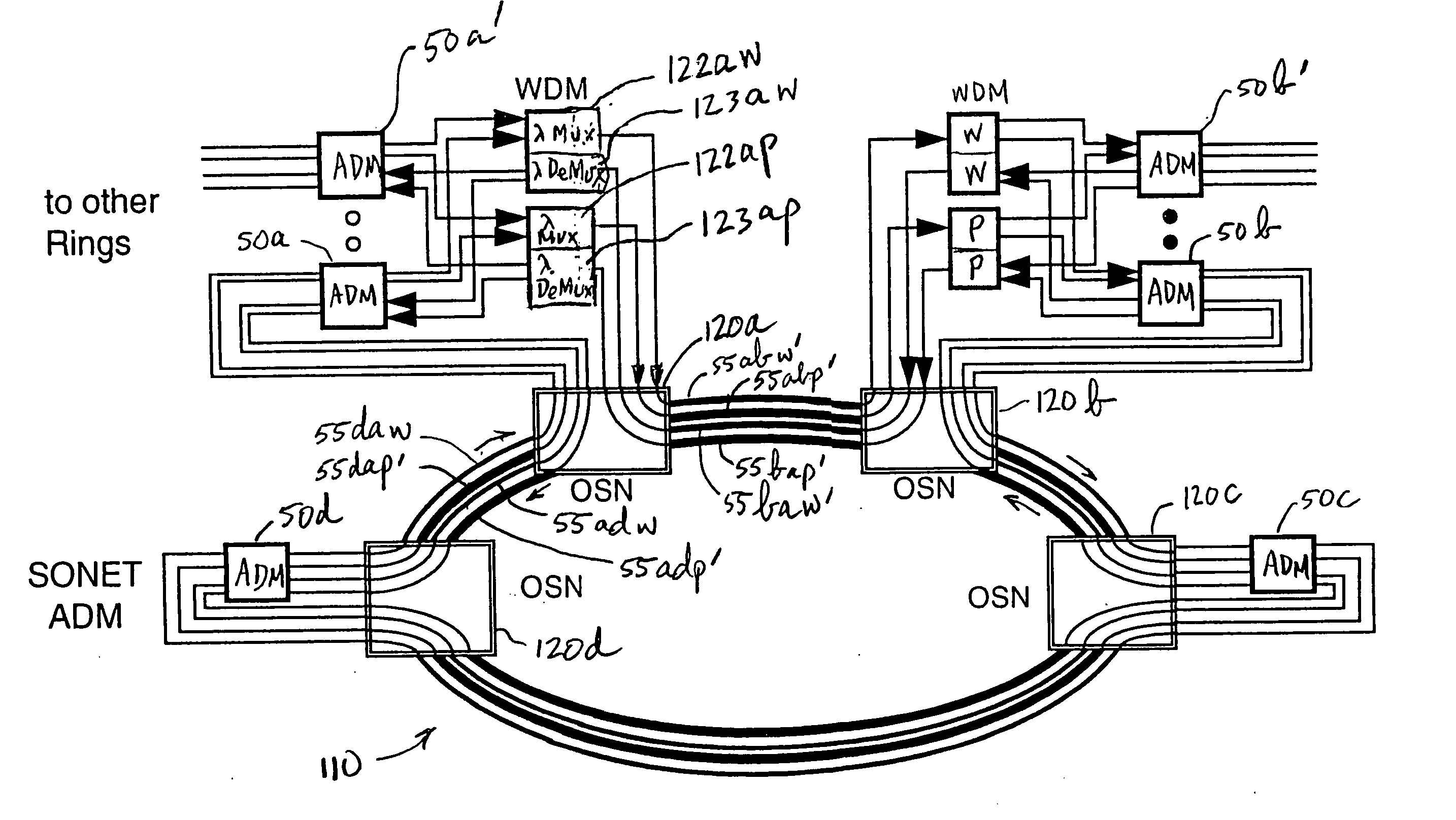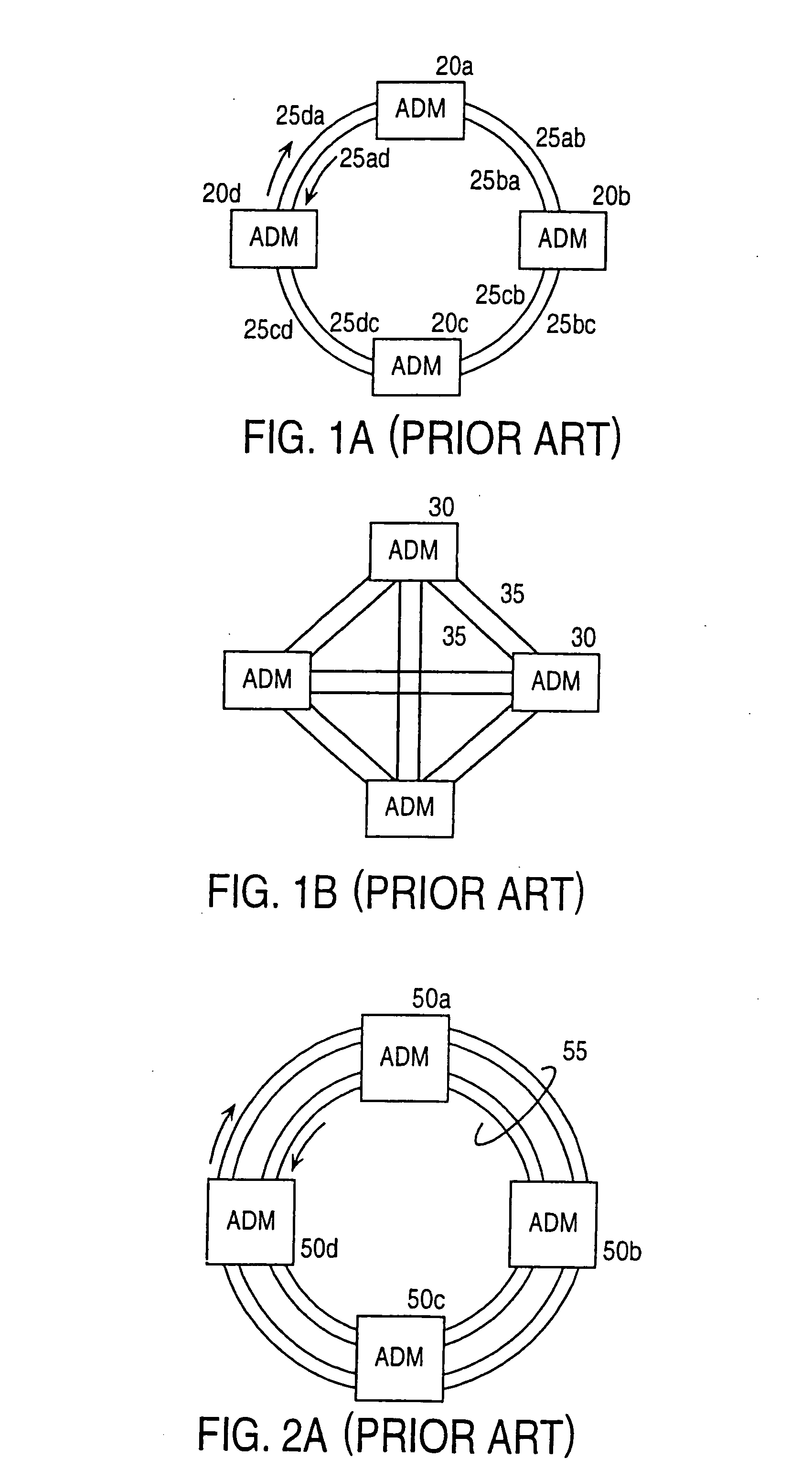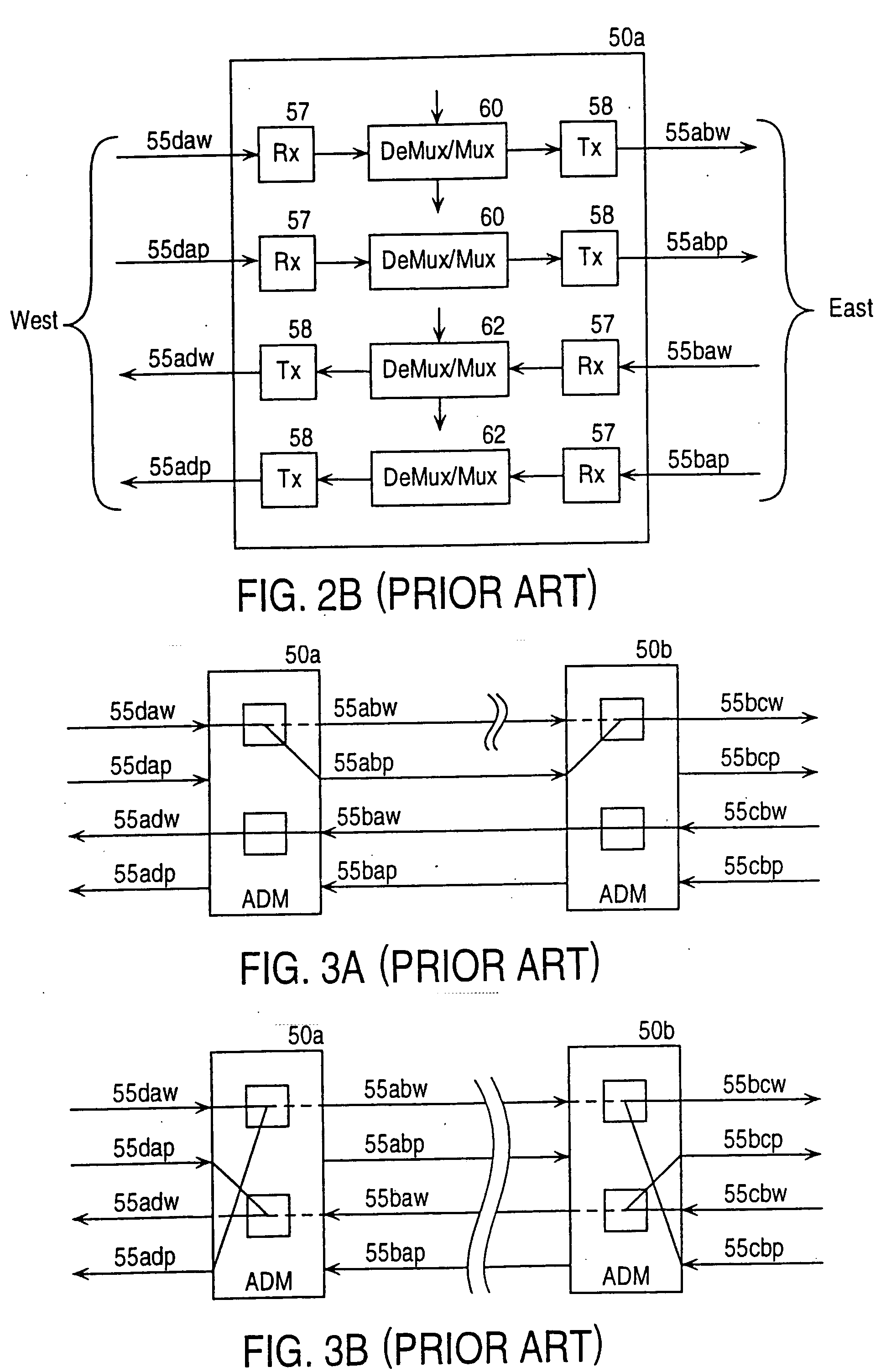Method and apparatus for operation, protection, and restoration of heterogeneous optical communication networks
a heterogeneous optical communication and heterogeneous technology, applied in the field of optics and communications, can solve the problems of heterogeneous networks, network more vulnerable to failures of larger magnitude, and broken restoration schemes (ring switching)
- Summary
- Abstract
- Description
- Claims
- Application Information
AI Technical Summary
Benefits of technology
Problems solved by technology
Method used
Image
Examples
Embodiment Construction
1.0 Technological Overview
1.1 Network Layers
Discussions of network communications are often with reference to a network layer model, such as the International Standards Organization (ISO) Open Systems Interconnection (OSI) reference model. The OSI layers, from the highest to the lowest, include the application layer, the presentation layer, the session layer, the transport layer, the network layer, the data link layer, and the physical layer.
The application layer supports semantic exchanges between applications and provides access to the lower functions and services. The presentation layer deals with representing data to the end user or application. The session layer organizes and structures the interaction between applications and devices. The transport layer is responsible for transparent and reliable transfer of data without regard to the nature and attributes of the transfer medium. The network layer establishes communication between networks and is concerned with address...
PUM
| Property | Measurement | Unit |
|---|---|---|
| wavelengths | aaaaa | aaaaa |
| wavelengths | aaaaa | aaaaa |
| wavelengths | aaaaa | aaaaa |
Abstract
Description
Claims
Application Information
 Login to View More
Login to View More - R&D
- Intellectual Property
- Life Sciences
- Materials
- Tech Scout
- Unparalleled Data Quality
- Higher Quality Content
- 60% Fewer Hallucinations
Browse by: Latest US Patents, China's latest patents, Technical Efficacy Thesaurus, Application Domain, Technology Topic, Popular Technical Reports.
© 2025 PatSnap. All rights reserved.Legal|Privacy policy|Modern Slavery Act Transparency Statement|Sitemap|About US| Contact US: help@patsnap.com



